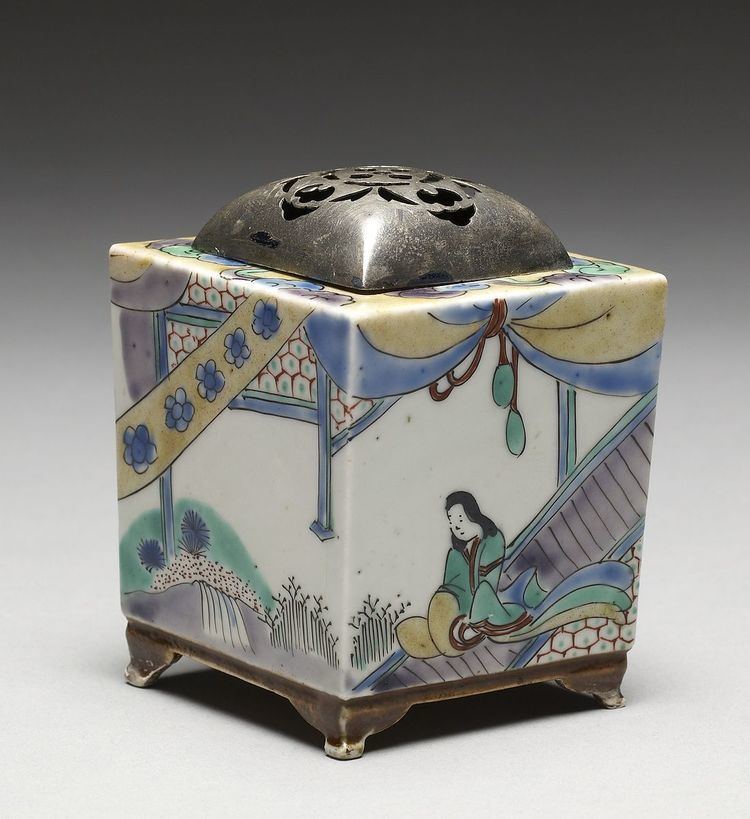 | ||
Arita ware (有田焼, Arita-yaki) is a broad term for Japanese porcelain made in the area around the town of Arita, in the former Hizen Province, northwestern Kyūshū.
History
According to tradition, the Korean potter Yi Sam-pyeong (d. 1655), or Kanagae Sanbee (金ヶ江三兵衛), is often considered the father of Arita ware porcelain. This narrative is however disputed by many historians. He is nevertheless honoured in Sueyama Shrine as the founder.
The first porcelain made in Japan followed the discovery of porcelain clay near Arita near the end of the 16th century. A number of kilns opened up in the area, and a considerable variety of styles were made, the Japanese export porcelain destined for Europe generally using Western shapes and Chinese decoration. Early wares used underglaze blue decoration, but by the mid-17th century Arita was in the forefront as Japan developed overglaze "enamelled" decoration in a range of bright colours.
Between the second half of the 17th century and the first half of the 18th century they were extensively exported to Europe, travelling initially from Arita's port of Imari, Saga to the Dutch East India Company's outpost at Nagasaki. The type called kin-rande was especially popular and is therefore known in the West also as Imari ware (伊万里焼, Imari-yaki).
Nabeshima ware developed out of Arita, which was of a higher quality produced for the Nabeshima Lords of the Saga Domain.
Kakiemon is a style of porcelain that developed out of Arita.
The kilns in Arita also produced white Hakuji porcelain.
